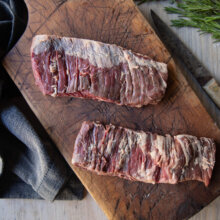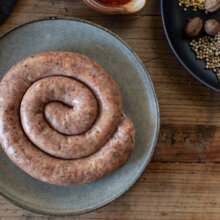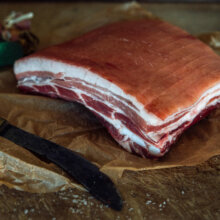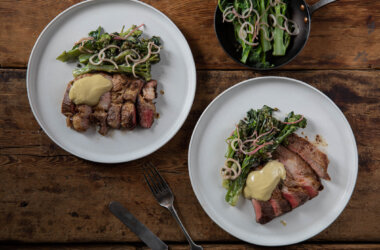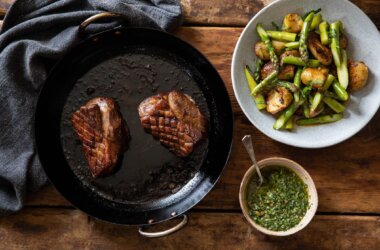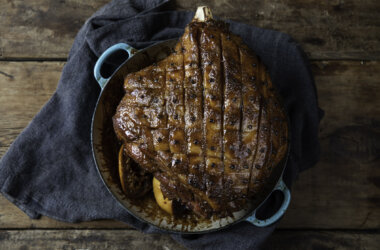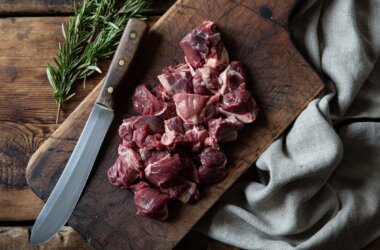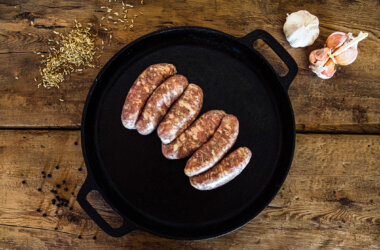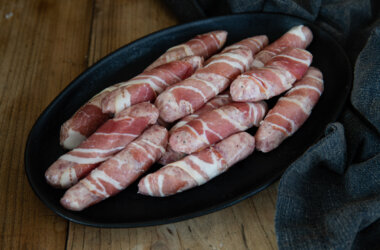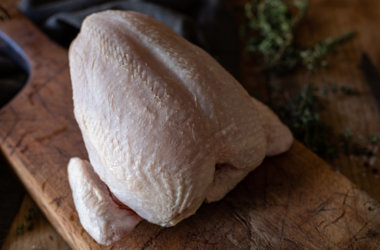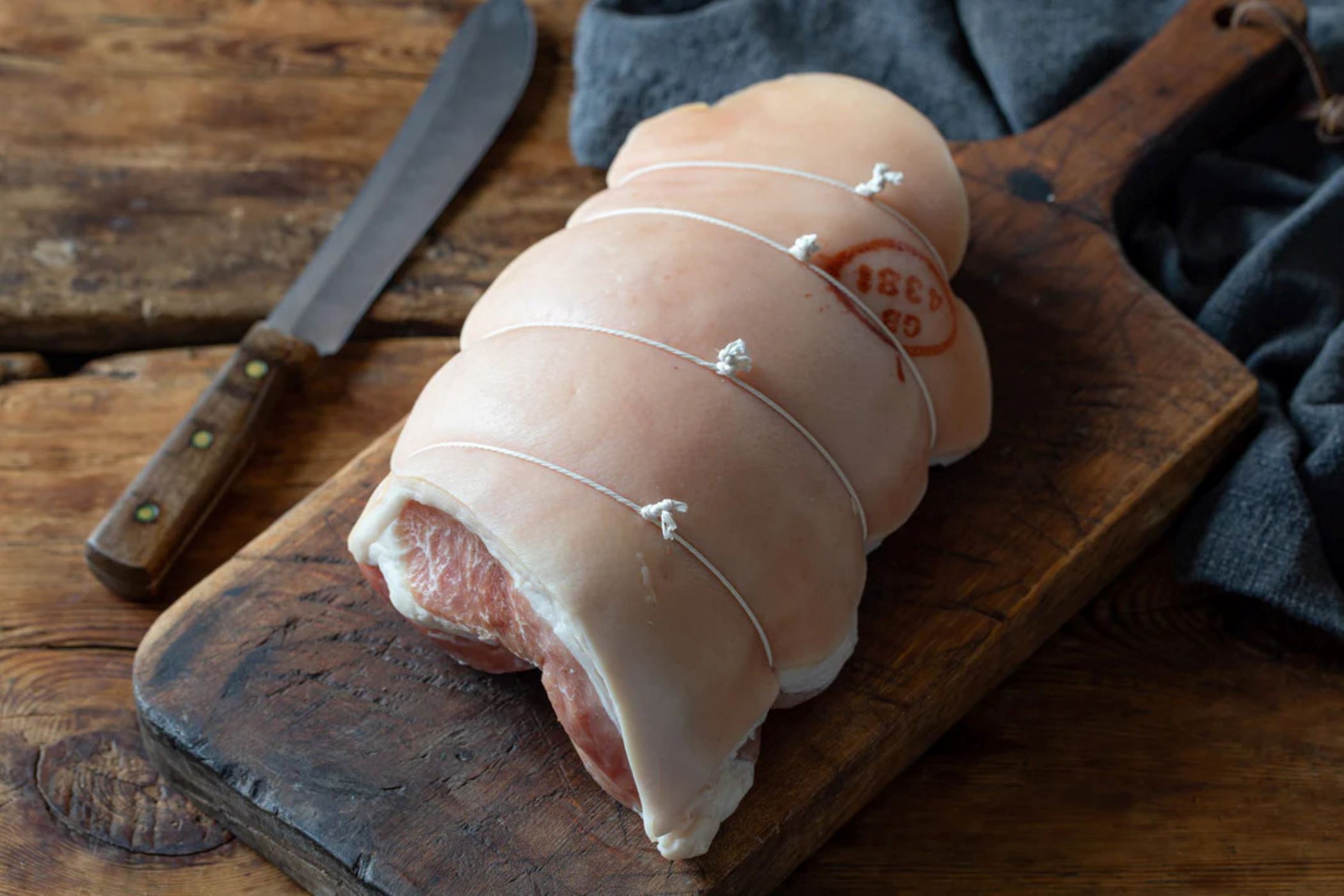
What is yorkshire ham?
Yorkshire Ham and York-style ham are all variations of the classic English York Ham. The origins of the York ham can be found in medieval Yorkshire, when it was highly prized — the curing technique has changed little through the ages. It is traditionally a dry cured gammon that is then cooked to be enjoyed, unlike its European counterparts, such as Parma ham. The process involves rubbing dry salt onto the hams before being hung to cure in our curing chamber.
The ham’s notoriety is partly due to the history of fine pigs coming from Yorkshire, with the county enjoying the reputation of developing and farming the Large and Middle White pigs, both excellent at providing well-rounded hams with superb depth. We focus on supporting farmers working with the Middle Whites and Tamworth pigs. These free-range pigs have an incredibly active life, helping produce a wonderfully flavoursome ham.
We offer three cuts of York-style ham — a ham rump weighing around 1.6 kg for smaller parties, a boneless joint weighing on average between 2.2-2.6 kg, and an impressive 7-8 kg ham cured on the bone for larger gatherings. All sizes are perfect to serve warm on Boxing Day, or any other day, to be honest — the generous size with a good covering of fat means they cook beautifully and stay moist.
How long do you cook an uncooked ham?
Depending on the size of your uncooked ham, it needs to be simmered gently for the following times:
- between 45-minutes to 1-hour for the 1.6 kg ham
- 1.5-hours for the 2.2-2.6 kg option
- 3-4 hours for the larger bone-in ham
After cutting the outer layer of the skin off (leaving as much as fat as possible), you then finish it off either under a hot grill, or, for the larger option, a hot oven to achieve a wonderfully enticing glaze.
How to cook Yorkshire ham
- Cover your ham entirely with cold water, a few cloves, black peppercorns, one bay leaf, and some black treacle.
- Slowly bring the pot to a simmer and skim off any scum that forms on the water.
- This simmering process should take an hour to an hour and a half if using a larger joint.
- Once the ham has reached an internal temperature of 66℃, remove it from the liquid and set it aside to cool slightly. DO NOT throw away the cooking liquid (see top tips below).
- Once cooled, carefully remove the outer layer of the skin, keeping as much of the fat on the ham as possible. Now make a diamond pattern across the ham fat with a knife.
- In each intersection, add a clove for important flavour and decoration!
- Create a glaze of your choosing. Mustard and something sweet (honey) is usually a winning combination. Alternatively, try chilli rum, sherry vinegar, and brown sugar.
- Place the ham in a foil-lined roasting tray and cover it with your chosen glaze.
- Roast in a pre-heated hot oven (220℃) for 25-minutes, basting the ham as you go.
- Allow to cool slightly before serving.
Top tips
- The cooking liquid has many uses, from a simple soup made with split or fresh peas, depending on the season, to a jambalaya made with Texan-style hot links sausages and prawns, or perhaps the classic Italian risotto risi e bisi, made with smoked bacon lardons and peas.
- It would also make an excellent white sauce, with the inclusion of some leftover diced ham, and perhaps some diced, cooked chicken, to be baked under a pastry lid for a comforting pie. Please note the cooking liquid will contain some salt, and this should be taken into account when adjusting seasoning for any recipe, particularly if using in place of chicken stock.
Recipes for uncooked ham
Sticky and sweet with a blast of heat from the English mustard powder, Val Warner’s Glazed ham with mustard and honey makes for a delicious Christmas centrepiece.
